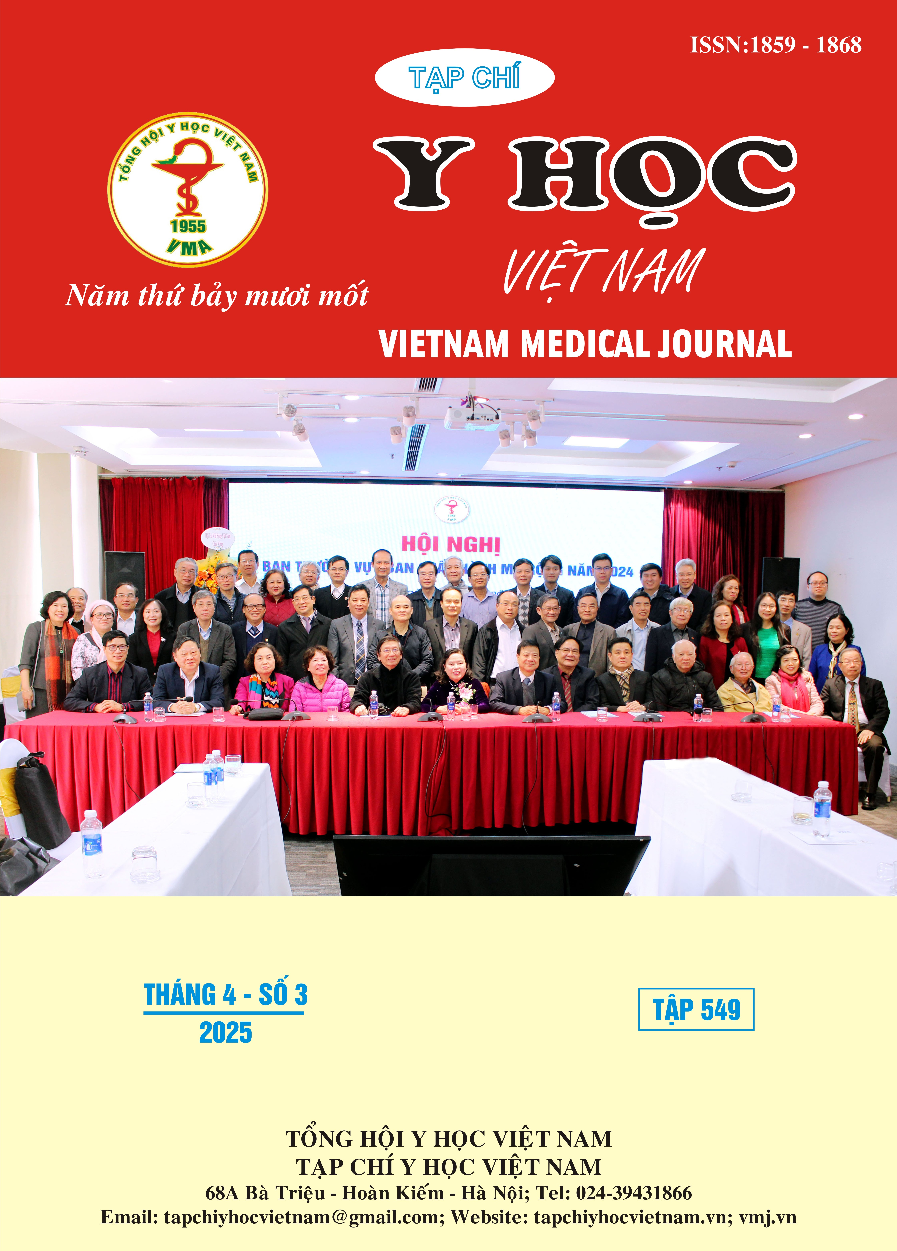EVALUATION OF TREATMENT OUTCOMES FOR CATARACT WITH CORNEAL ASTIGMATISM USING PHACOEMULSIFICATION COMBINED WITH LIMBAL RELAXING INCISIONS
Main Article Content
Abstract
Objectives: Describe the clinical, paraclinical and evaluate the treatment outcomes of cataract with corneal astigmatism using phacoemulsification combined with limbal relaxing incisions. Materials and method: A descriptive cross-sectional prospective study. The study included 41 eyes of cataract patients aged ≥18 years with regular corneal astigmatism ≥1D who underwent phacoemulsification combined with limbal relaxing incisions using an LRI knife at Hanh Phuc General Hospital in An Giang, from May 2024 to the end of March 2025.Results: The patients had an average age of 65.73 ± 9.526 years, 56.1% having grade III nuclear cataract hardness. After 1 month of treatment, the average corneal astigmatism was reduced to 0.63 ± 0.38D, and 100% achieved best spectacle-corrected visual acuity at a good level according to the WHO classification, and at 3 months post-treatment, 95.1% reported comfort. There was a statistically significant difference in LogMAR Uncorrected visual acuity (UCVA) and Best spectacle corrected visual acuity (BSCVA) from 1 month compared to 1 week after treatment (p<0.05). Conclusion: Phacoemulsification combined with limbal relaxing incisions for the treatment of cataract with corneal astigmatism ≥1D is a safe and highly effective method.
Article Details
Keywords
corneal astigmatism, cataract, phacoemulsification, limbal relaxing incisions
References
2. Nguyễn Hoàng Phúc, Nguyễn Công Kiệt, Trương Tiến Dũng. Đánh giá hiệu quả điều chỉnh loạn thị giác mạc trong phẫu thuật nhũ tương hóa thủy tinh thể kết hợp rạch giác mạc rìa. Tạp chí Y học Việt Nam. 2024. 540 (1). tr. 329-333.
3. Trần Đình Tùng. Đánh giá hiệu quả điều chỉnh loạn thị giác mạc sẵn có bằng phẫu thuật phaco kết hợp rạch giác mạc rìa. Tạp chí Y học Thành phố Hồ Chí Minh. 2012. 16 (1). tr. 211-216.
4. Abu-Ain M. S., Al-Latayfeh M. M.,Khan M. I. Do limbal relaxing incisions during cataract surgery still have a role?. BMC Ophthalmol. 2022. 22 (1). p. 102.
5. Carvalho M. J., Suzuki S. H., Freitas L. L., et al. Limbal relaxing incisions to correct corneal astigmatism during phacoemulsification. J Refract Surg. 2007. 23 (5). pp. 499-504.
6. Curragh D. S.,Hassett P. Prevalence of Corneal Astigmatism in an NHS Cataract Surgery Practice in Northern Ireland. Ulster Med J. 2017. 86 (1). pp. 25-27.
7. Ganekal S., Dorairaj S., Jhanji V. Limbal relaxing incisions during phacoemulsification: 6-month results. J Cataract Refract Surg. 2011. 37 (11). pp. 2081-2082.
8. Naguib M. A., Elrashidy H. E., Samir G. Treatment of corneal astigmatism by limbal relaxing incisions during phacoemulsification surgery. 2022. 20 (1). pp. 33-38.
9. Steinmetz JD. Causes of blindness and vision impairment in 2020 and trends over 30 years, and prevalence of avoidable blindness in relation to VISION 2020: the Right to Sight: an analysis for the Global Burden of Disease Study. Lancet Glob Health. 2021. 9 (2). pp. 144-160.
10. Yuan X., Song H., Peng G., et al. Prevalence of Corneal Astigmatism in Patients before Cataract Surgery in Northern China. J Ophthalmol. 2014. p. 536412.


